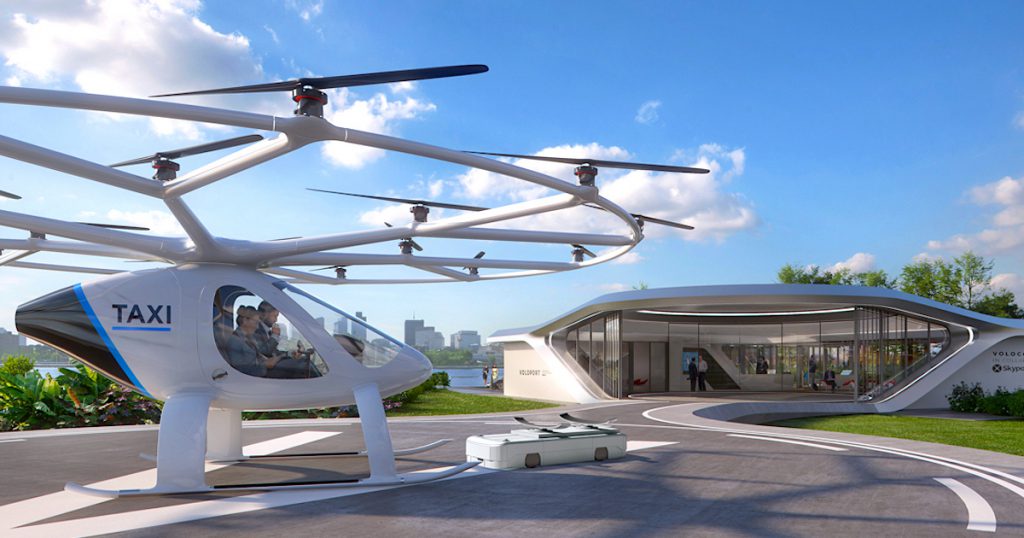Earlier In April, German company Volocopter announced it is working with the Civil Aviation Authority of Singapore (CAAS) to launch helicopter taxi trials in Singapore by the end of this year.
It has since expressed interest to launch its electric helicopter taxis in Singapore, with an aim to make it as affordable as Grab rides in the next five to 10 years.
US-based Bell Helicopter also has plans to launch its air taxi service here by 2025. It said that possible routes would include airports, hotels, and hospitals, but “MRT stations, too, could be core locations as such a service expands”.
As more firms are eyeing to launch their ‘flying taxi’ service in Singapore, it begs the question: ‘where are they going to land?’
British firm Skyports Ltd told Bloomberg that it’s building the world’s first “vertiport” for electric aircrafts in Singapore.
Called ‘Volo-Port‘, it will serve as a mobile landing pad for Volocopter electric air taxis, and cater to the public flight trials that will take place in the second half of this year.
Skyports will be unveiling the vertical take-off and landing station at the Intelligent Transport Systems World Congress that will take place at Marina Bay from October 21 to 25.
Visitors will get to ‘trial’ the Volocopter — they can sit inside the aircraft and a test pilot will take it up for a 3-minute solo demo flight.
With this demonstration, Volocopter hopes to receive an honest public feedback on the flight — “whether it’s too loud, (or) whether they would feel safe flying in it.“
Skyports said that it working on making the ride a very accessible form of transportation that is not just limited or exclusive to the rich.
Uber for one, is already looking to launch air taxi services in Los Angeles, Dallas and Melbourne as early as 2023.
They are expected to start off with a range of about 50 miles for journeys of about 10 to 20 minutes.
According to investment bank Citi, the likely cost of a ride stands at about US$3.75 (S$5.18) per mile.
It’s definitely cheaper than a limousine, but it’s still double the cost of a ride-hailing car. In all, users must keep in mind that they are paying more to avoid the traffic jam.
